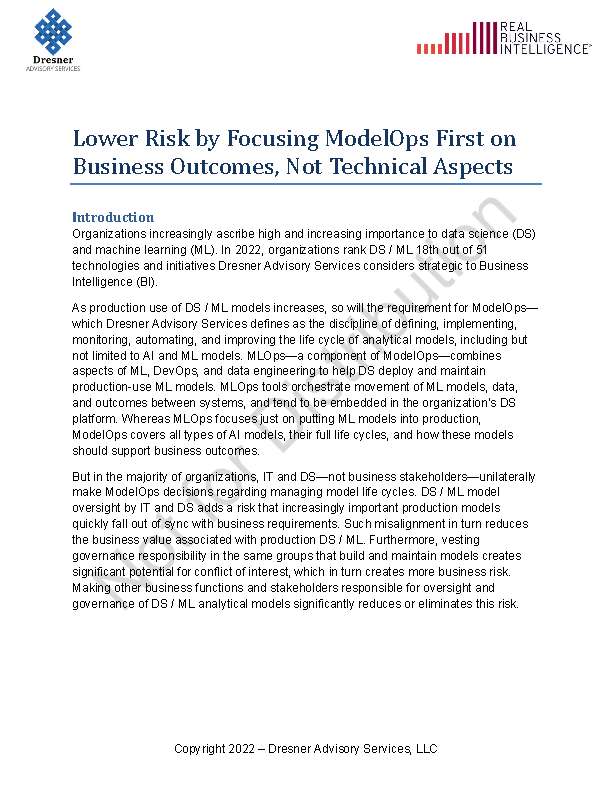
Organizations increasingly ascribe high and increasing importance to data science (DS) and machine learning (ML). As production use of DS / ML models increases, so will the requirement for ModelOps—the discipline of defining, implementing, monitoring, automating, and improving the life cycle of analytical models, including but not limited to AI and ML models.
But in the majority of organizations, IT and DS—not business stakeholders—unilaterally make ModelOps decisions regarding managing model life cycles. DS / ML model oversight by IT and DS adds a risk that increasingly important production models quickly fall out of sync with business requirements. Such misalignment in turn reduces the business value associated with production DS / ML.
A focus on business outcomes—a best practice in ModelOps—has two significant benefits. First, when business functions track achievement of intended business benefits and identify needs for model correction or improvement, those activities align to a vested interest (realizing better business outcomes, which in turn support achievement of personal performance goals). Second, removing oversight and governance of DS / ML analytical models from IT and DS agendas enables these teams to focus on their area of expertise—managing the technical aspects of DS / ML models.
Data leaders need to evaluate and address any ModelOps gaps in their organizations. Acting as intermediaries, they likely will raise awareness both with IT and DS, as well as business functions, that such gaps exist. Data leaders then should invest in creating and then regularly refining a formalized DS / ML model life-cycle management methodology as a key component of their ModelOps.
You do not have permission to access this document. Make sure you are logged in and/or please contact Danielle with further questions.